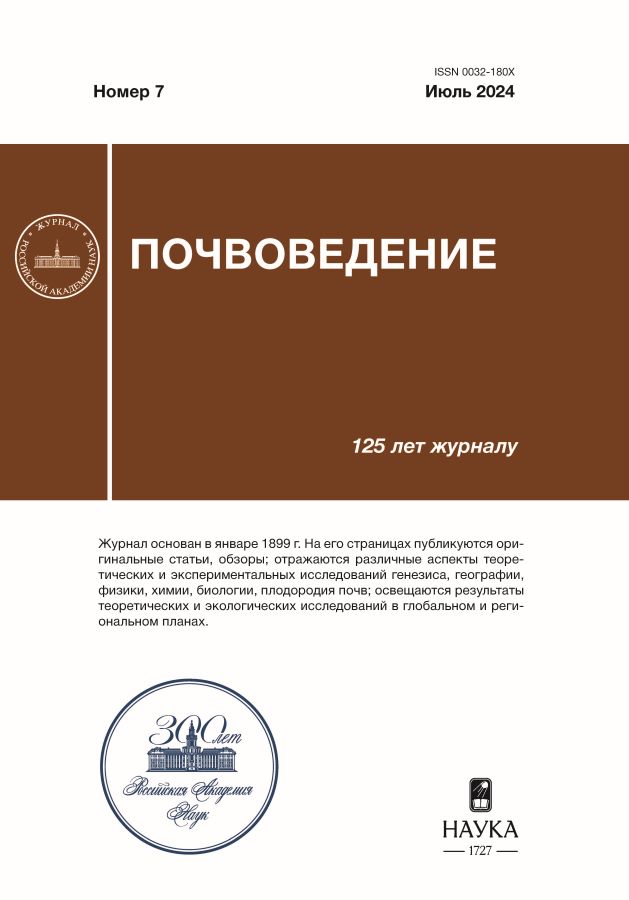Using of the δ13С Variations of Paleosols Organic Matter in Western Transbaikalia for Reconstruction of Paleoprecipitation Dynamics During Late Glacial and Holocene
- 作者: Golubtsov V.A.1, Ryzhov Y.V.1,2, Cherkashina A.A.1
-
隶属关系:
- Sochava Institute of Geography, Siberian Branch of Russian Academy of Sciences
- Institute of Earth’s Crust, Russian Academy of Sciences
- 期: 编号 7 (2024)
- 页面: 950-967
- 栏目: SOIL CHEMISTRY
- URL: https://kld-journal.fedlab.ru/0032-180X/article/view/666615
- DOI: https://doi.org/10.31857/S0032180X24070036
- EDN: https://elibrary.ru/XVHQSW
- ID: 666615
如何引用文章
详细
Analysis of the stable carbon isotopic composition (δ13C) of soil organic matter plays an important role in assessing past climate changes and feedback of landscape components. The object of the study was the soils of nine soil-sedimentary sequences formed in various landscape and geomorphological conditions of the Western Transbaikal region. The formation time of sections covers the last 15 kyr. The phases of pedogenesis occurred quite synchronously within genetically different landforms, which allows us to consider them as caused by regional landscape-climatic changes, which also influenced the δ13C of soil organic matter. There is a wide range of variations in δ13С values (from –20.99 to –27.00‰). The most contrasting changes in δ13С values over time were noted for sections formed in the driest steppe conditions; the smallest amplitude of δ13С values is characteristic of sections formed under taiga landscapes with the greatest moisture. However, in general, the trends in changes in δ13С values over time within different landscape zones are similar: the lowest δ13С values are characteristic of the organic matter of Late Glacial soils formed 14–15 and 12 kyr BP, as well as soils of the late Holocene (3.5–2.0 and 1.0–0.3 kyr BP). The organic matter of soils of the Middle Holocene (9.0–4.0 kyr BP) and the time interval of 13–14 kyr BP is enriched in 13C. Based on the identified dependence of the δ13C values of organic matter of modern soils in the region on the amount of precipitation, a quantitative reconstruction of precipitation during the growing season was carried out. The data obtained allow us to estimate the time intervals of 11.7–10.0 and 4.0–1.5 kyr BP as the most optimal for the formation of soils in Western Transbaikalia. An increase in temperatures and a decrease in atmospheric humidity in the Middle Holocene, characteristic of both Transbaikalia and adjacent territories, had a negative impact on the intensity of pedogenesis.
作者简介
V. Golubtsov
Sochava Institute of Geography, Siberian Branch of Russian Academy of Sciences
编辑信件的主要联系方式.
Email: tea_88@inbox.ru
俄罗斯联邦, Irkutsk
Yu. Ryzhov
Sochava Institute of Geography, Siberian Branch of Russian Academy of Sciences; Institute of Earth’s Crust, Russian Academy of Sciences
Email: tea_88@inbox.ru
俄罗斯联邦, Irkutsk; Irkutsk
A. Cherkashina
Sochava Institute of Geography, Siberian Branch of Russian Academy of Sciences
Email: tea_88@inbox.ru
俄罗斯联邦, Irkutsk
参考
补充文件















